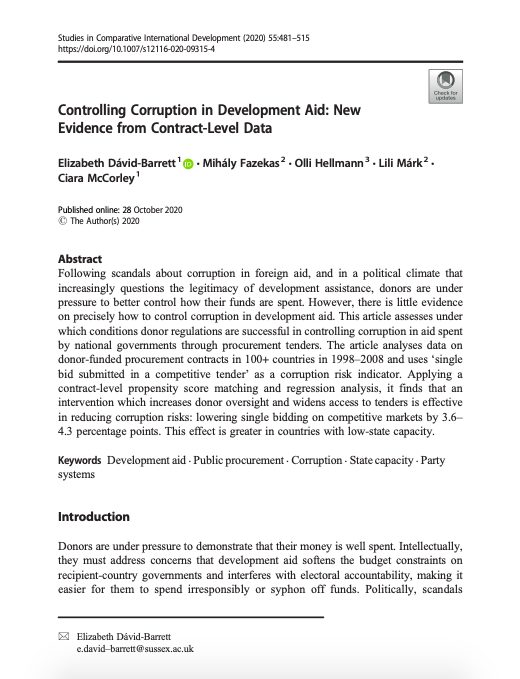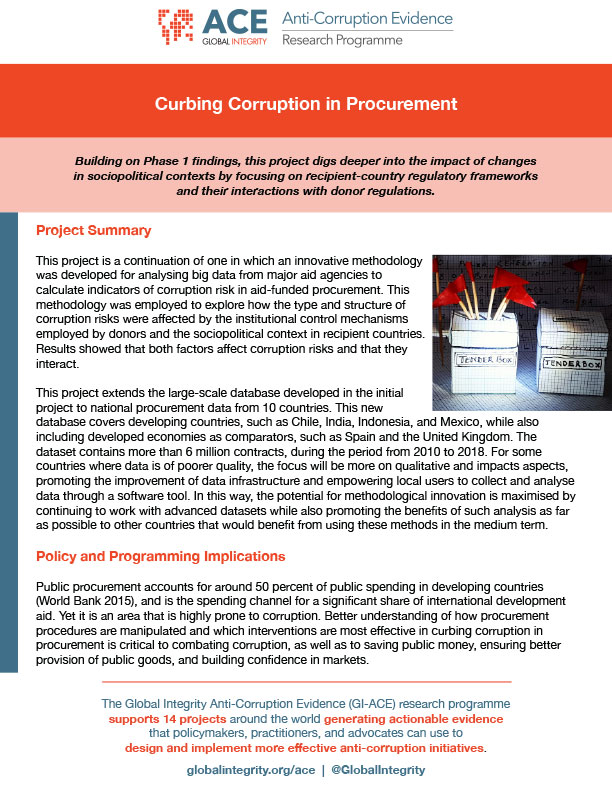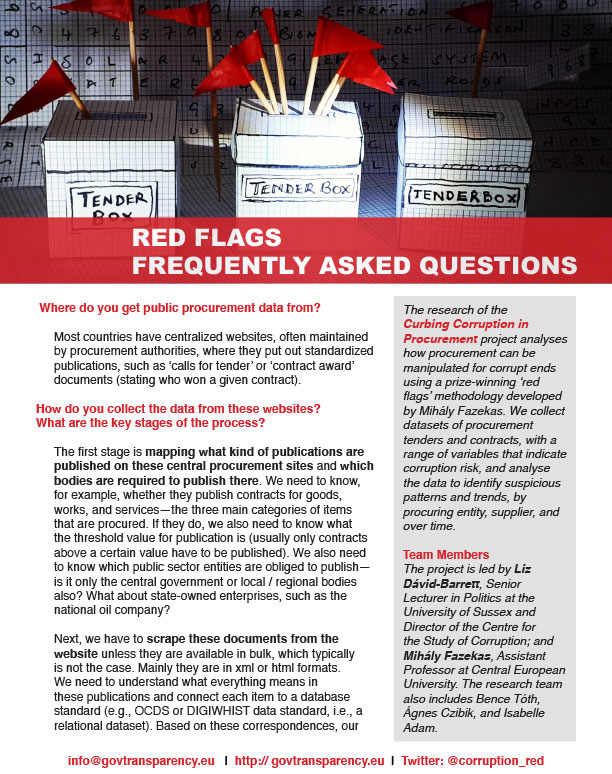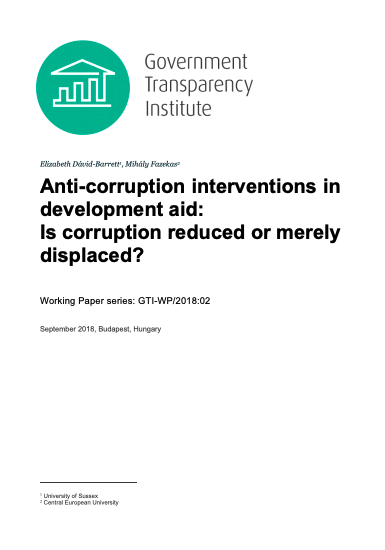The Red Flags method uses large datasets to develop practical tools to hold governments and funders to account, but improving accountability and reducing corruption depends on users having the skills and tools to interpret data and use our method. Building on Phase 1 findings, this project utilises the red-flags methodology to build online analytics portals and train a range of stakeholders to use them to identify malfeasance in procurement.
To learn more about this project, contact Principal Investigator Liz David-Barrett.
Project Summary
The aim of this project is to strengthen capacity to use the red-flags methodology to identify malfeasance in procurement, by developing a user-friendly online analysis tool and training a wide group of users to ensure take-up. The overall aim is to reduce the prevalence of corruption in this important area of public spending.
The intended goal of this pilot is that these users integrate the tool into their work, using it to identify risk patterns and investigate further. Depending on what an investigation finds, this could subsequently lead to a number of intermediary outcomes such as changing procurement rules and IT systems (e.g. better data capture), increasing monitoring of particular procuring entities, disciplinary action against public officials, or debarment of certain suppliers.
The project worked closely with the Integrity Commission of Jamaica, the Ugandan Public Procurement and Disposal of Assets Authority, and Africa Freedom of Information Centre to develop the Opentender Uganda and Opentender Jamaica tools.
Policy and Programming Implications
Corruption in public procurement is difficult to spot or measure because manipulation is often hidden and it is hard to distinguish corruption from inefficiency or incompetence.
We develop procurement data analytics portals to help stakeholders – including procurement regulators, law enforcement, and civil society organisations – monitor their country’s procurement and identify high-risk or suspicious patterns. These can be used to stimulate investigations, improve accountability, or to inform changes in policy aimed at closing down loopholes or disincentivising corrupt practices.
Research Questions
- How can big data analytics help us identify corruption risks in public procurement?
- How can procurement regulators better detect and fight corruption?
Methodology
We build our procurement data analytics portals after wide consultation with stakeholders and in close collaboration with our local partners, to ensure that they are as useful as possible for practitioners. We use data that our partners already collect, but clean and process it so that we can use it to build corruption risk indicators that make sense in the local context.
We are also producing training videos to make it easier for practitioners to use the tool, even beyond the life of this project. Our aim is that local stakeholders integrate procurement data analysis into their routine work.
Research Team Members
- Liz David-Barrett, Professor, University of Sussex; Director of the Centre for the Study of Corruption
- Mihály Fazekas, Assistant Professor, Central European University; Scientific Director, Government Transparency Institute










